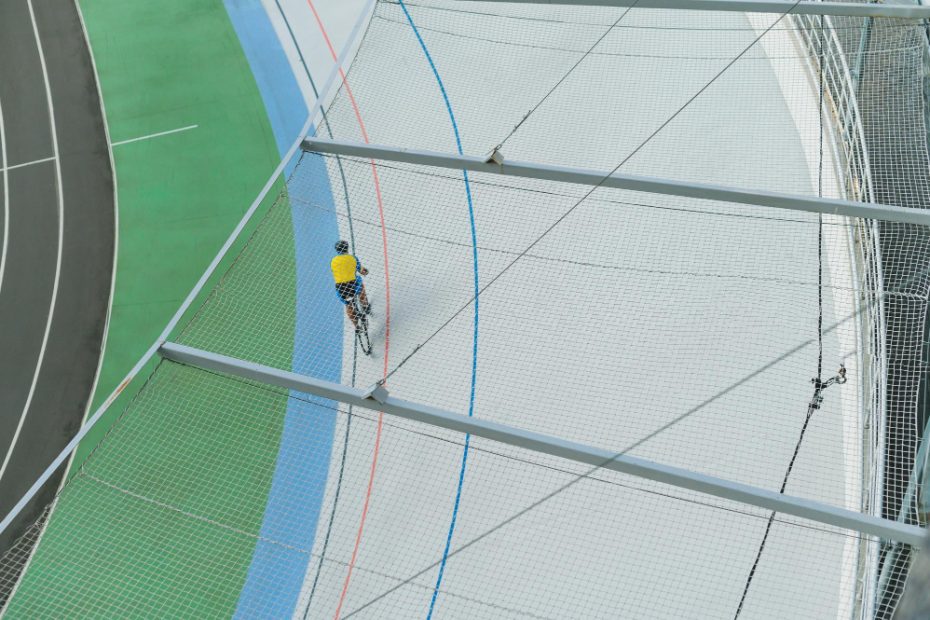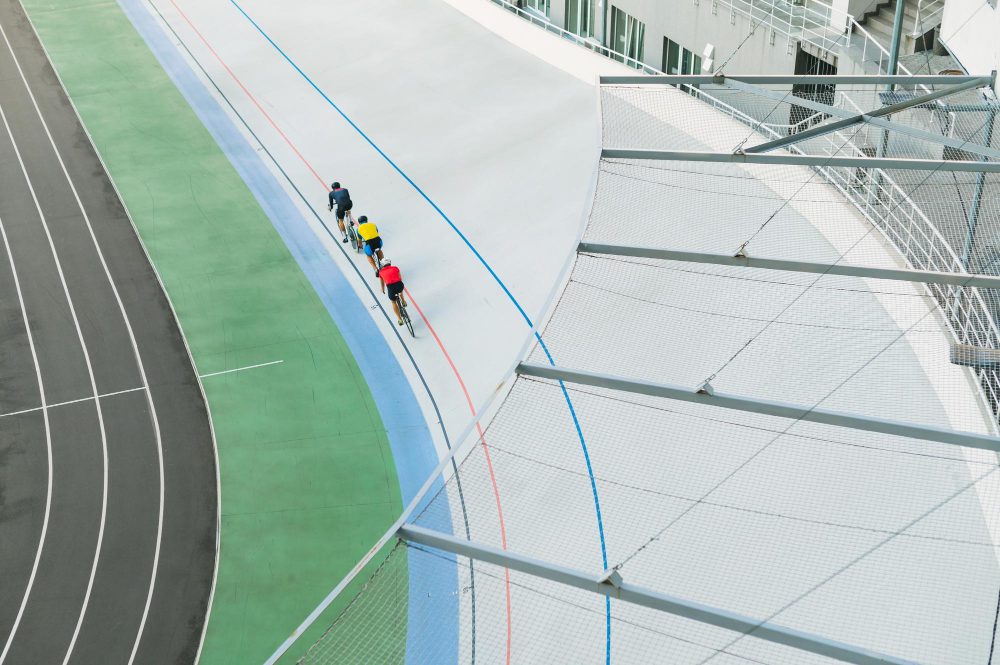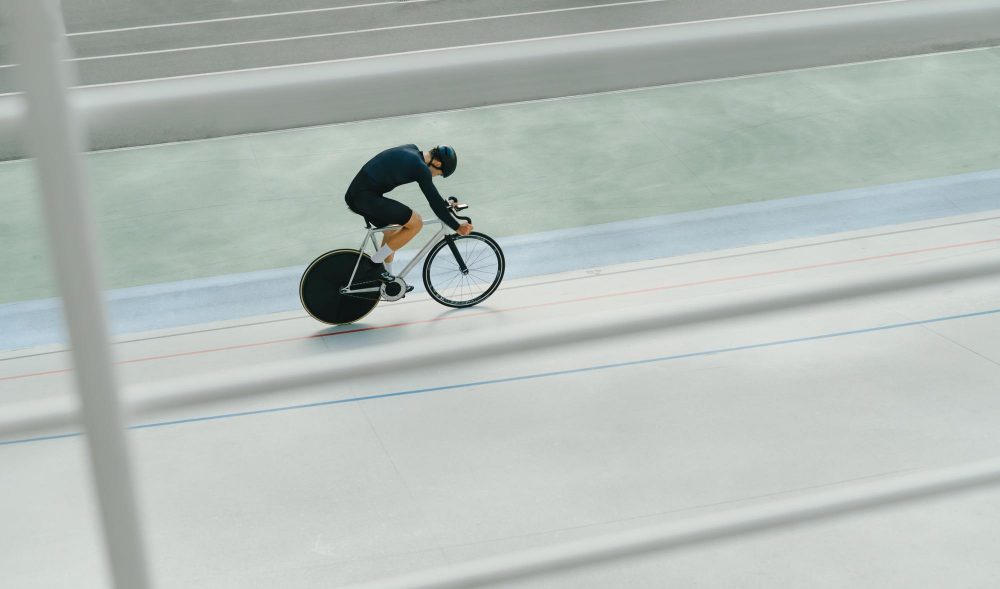Why is it called Keirin?
Keirin is a unique and exciting form of track cycling that originated in Japan, but has gained popularity around the world as a thrilling spectator sport. The word “Keirin” itself is of Japanese origin, but what does it mean and why is it called that? In this article, we will explore the origins of Keirin and shed light on its fascinating history.
The Meaning of Keirin
The term “Keirin” (競輪) translates to “racing wheels” in English. It combines two Japanese words: “kei” meaning competition or race, and “rin” which refers to wheels or a revolution. Together, these words perfectly encapsulate the essence of this fast-paced and high-stakes cycling discipline.
A Brief History
Keirin was first introduced in Japan in 1948 as a means to stimulate the economy after World War II. It was initially developed as a form of gambling entertainment, with the government establishing a national racing organization known as the Japan Keirin Association (JKA) to oversee the sport.
“Keirin was created as a way to generate revenue and provide employment opportunities for post-war Japan.”
In its early years, Keirin races were held on velodromes throughout Japan and attracted huge crowds, making it a significant contributor to the country’s economic recovery. Over time, the sport began to focus more on athleticism and fair competition rather than just being a gambling spectacle.
The Keirin School
To ensure the integrity and professionalism of the sport, the JKA established the Keirin School, where aspiring riders undergo rigorous training and education. The school not only teaches athletes the physical aspects of cycling but also emphasizes discipline, sportsmanship, and the importance of fair play.
“The Keirin School plays a crucial role in producing skilled riders and upholding the values of the sport.”
Only those who successfully complete the training program are granted licenses to compete as professional Keirin cyclists. This system guarantees that races are conducted at the highest level of expertise and maintains the integrity of the sport.
Keirin Around the World
While Keirin originated in Japan, its popularity has spread globally. Today, it is an Olympic event and is enjoyed by fans and participants from various countries, including the United Kingdom.
In the UK, Keirin racing took off in the late 1990s and has become an integral part of British track cycling. The sport has garnered a substantial following, with events regularly held at velodromes across the country. British riders have achieved remarkable success in international Keirin competitions, further contributing to its growing popularity.
In Conclusion
So, why is it called Keirin? The name perfectly reflects the essence of this thrilling form of track cycling, with its intense competition, high-speed race wheels, and the adrenaline rush experienced by both riders and spectators. From its humble beginnings as a means to stimulate Japan’s economy, Keirin has evolved into a globally recognized sport that continues to captivate audiences around the world.
What is a Keirin Frame?
A Keirin frame is a type of bicycle frame specifically designed for the sport of Keirin racing. Keirin is a popular form of track cycling that originated in Japan and is now practiced worldwide. The sport involves sprinting on a velodrome track and requires specialized bicycles to meet the unique demands of the race.
The Structure and Design
A Keirin frame is typically made from lightweight and sturdy materials such as carbon fiber or aluminum alloy. These materials ensure maximum strength and durability while minimizing weight, allowing riders to achieve higher speeds. The frame is built with aerodynamics in mind, with a streamlined shape to reduce wind resistance and improve overall performance.
The geometry of a Keirin frame is distinctively different from other racing bicycles. It features a steeper head tube angle for more responsive handling and quicker cornering. The bottom bracket, where the pedals attach, is positioned higher for improved ground clearance during banking turns. This allows riders to maintain speed and stability throughout the race.
Regulations and Requirements
Keirin racing has strict regulations governing the design and specifications of the bicycles used. International Cycling Union (UCI) rules dictate that Keirin frames must have a minimum weight of 6.8 kilograms and meet specific size requirements. These regulations are enforced to ensure fair competition and maintain the safety of riders.
The Importance of a Keirin Frame
A well-designed Keirin frame plays a crucial role in the performance and success of a Keirin racer. Its aerodynamic properties, lightweight construction, and specialized geometry contribute to better acceleration, control, and overall speed. The frame’s strength and rigidity are vital for transmitting power efficiently from the rider’s pedals to the wheels.
Keirin frames are engineered to provide the optimum balance of speed, stability, and maneuverability, allowing racers to excel in this high-intensity discipline.
Whether you’re a professional Keirin racer or someone looking to experience the thrill of track cycling, investing in a quality Keirin frame is essential for achieving your goals. With its specialized design and construction, a Keirin frame will give you a competitive edge and ensure an exhilarating racing experience.
What is the point of the Keirin cycle race?
The Keirin cycle race is a unique and fascinating event that originated in Japan but has gained popularity worldwide, including in the UK. This fast-paced track cycling race is known for its exciting atmosphere and tactical strategies employed by the riders.
A Brief History of Keirin
The Keirin race was first introduced in Japan in 1948 as a way to promote gambling and boost the country’s post-war economy. Today, it has evolved into a respected professional sport with its own governing body, the Japan Keirin Association.
Rules and Format
The Keirin race involves a group of six to nine riders competing against each other over several laps on an indoor velodrome track. The unique aspect of Keirin is the pacing motorcycle, known as a “derny,” which sets the initial speed of the race. Riders must follow the derny closely until the final laps when they sprint to the finish line.
The main objective of the Keirin race is to cross the finish line first, but the tactics and strategy used by the riders make it more than just a simple sprint. It requires a combination of explosive power, endurance, skillful maneuvering, and careful planning.
Benefits and Entertainment
The Keirin race offers many benefits to both the riders and spectators. For riders, it provides an opportunity to showcase their speed, agility, and tactical skills. It also allows them to earn a living as professional cyclists in a highly competitive sport.
From a spectator’s perspective, the Keirin race is an exhilarating experience. The high speeds, close proximity of the riders, and the unpredictability of the race create an adrenaline-fueled atmosphere. The sport also offers a range of betting options, adding an additional level of excitement and engagement for fans.
“The Keirin race is a thrilling spectacle that combines athleticism, strategy, and the element of chance. It’s a true test of a cyclist’s skills and nerve.” – Cycling enthusiast
The Future of Keirin in the UK
While the Keirin race has strong roots in Japan, it has increasingly gained popularity in the UK and other parts of the world. The Union Cycliste Internationale (UCI), the governing body for professional cycling, has incorporated Keirin events into major competitions, including the Olympic Games.
In the UK, the Keirin race has attracted a growing fan base, with velodrome events drawing large crowds. British cyclists, such as Sir Chris Hoy and Jason Kenny, have achieved great success in this discipline, further boosting its appeal.
As the sport continues to develop and evolve, the Keirin race serves as a thrilling and captivating addition to the world of cycling, offering both riders and spectators an adrenaline-pumping experience they won’t soon forget.
What is the difference between sprint and Keirin?
Sprint and Keirin are two exciting track cycling events that showcase speed and strategy. While both involve high-speed racing on a velodrome, there are notable differences between the two disciplines.
Sprint:
In sprint races, individual riders compete against each other over a set distance, typically 200 meters to 1 kilometer. The objective is to be the first rider to cross the finish line. Sprint events require explosive power and agility, as riders often reach speeds of over 60 kilometers per hour.
Unlike road cycling, where a race can span several hours, sprint races are short and intense. Riders typically start at opposite sides of the track and must carefully strategize when to make their move to gain an advantage over their opponent. Races may consist of multiple rounds, with riders advancing based on their performance in earlier rounds.
Key features of sprint races include:
- Rider vs. rider competition
- Short distances
- Explosive power and speed
- Strategic positioning and timing
“Sprint races are like all-out sprints, requiring bursts of power and tactical decision-making to outmaneuver opponents.”
Keirin:
Keirin, on the other hand, is a mass-start event that originated in Japan. It involves a group of riders racing around a velodrome for several laps. In Keirin, speed is important, but so is endurance and racecraft. The race begins behind a pacing motorcycle known as a derny, which gradually increases its speed before pulling off the track with approximately 600 meters remaining.
Once the derny leaves, the riders battle it out for the remaining distance, aiming to be the first to cross the finish line. Keirin races can be highly tactical, with riders jostling for advantageous positions and using drafting techniques to conserve energy before making their move in the final sprint.
Key features of Keirin races include:
- Mass-start racing
- Larger groups of riders
- Combination of speed, endurance, and tactics
- Drafting and positioning strategies
“Keirin races require a mix of endurance, strategy, and split-second decision-making to claim victory in the final sprint.”
In summary, while both sprint and Keirin are exhilarating track cycling events, they differ in terms of race format, distance, and strategic approach. Sprint races are individual battles over short distances, testing explosive power and timing, whereas Keirin involves mass-start group racing with a focus on endurance, tactics, and positioning. Both disciplines require immense skill, control, and sheer determination to excel at the highest level of track cycling.
Are Keirin Bikes Fixed Gear?
Keirin racing is a popular track cycling event that originated in Japan but has gained international recognition. The sport involves cyclists racing on specialized bikes called Keirin bikes. One common question that often arises is whether Keirin bikes are fixed gear.
Understanding Keirin Bikes
Keirin bikes, also known as Keirin track bikes, are specifically designed for the high-speed nature of Keirin racing. These bikes are built with lightweight frames, aerodynamic features, and stiff components to ensure optimal performance on the velodrome.
The Fixed Gear Myth
Contrary to popular belief, Keirin bikes are not fixed gear. While they may appear similar to fixed gear bikes due to their lack of gears or freewheel mechanism, Keirin bikes actually have a unique gear system known as a “two speed.” This system allows riders to select between two fixed gear ratios for different stages of the race.
The Two-Speed Gear System
The two-speed gear system on Keirin bikes provides riders with versatility during a race. The gears are typically located on the rear hub, and riders can switch between them using a shifter mechanism. The first gear ratio, often referred to as “small gear,” is used for acceleration and sprinting, while the second gear ratio, known as “big gear,” is utilized for maintaining high speeds.
It is worth noting that the gear selection on Keirin bikes is limited to a few fixed ratios, which means riders cannot continuously adjust their gear ratios like they can on bikes with derailleurs. This simplicity allows for faster gear changes during a race.
“Keirin bikes may look like fixed gear bikes, but they actually feature a two-speed gear system that gives riders the ability to switch between different gear ratios for optimal performance.”
Another important factor to consider is that Keirin races are highly regulated, and all participating bikes must meet specific requirements set by the Nihon Jitensha Shinkokai (Japanese Keirin Association). These regulations include specifications for frame geometry, weight, gear ratios, and even handlebar tape color.
In conclusion, while Keirin bikes share some similarities with fixed gear bikes, they are not the same. The unique two-speed gear system and strict regulations distinguish Keirin bikes from fixed gear bikes commonly used in urban cycling or bike messenger culture.


